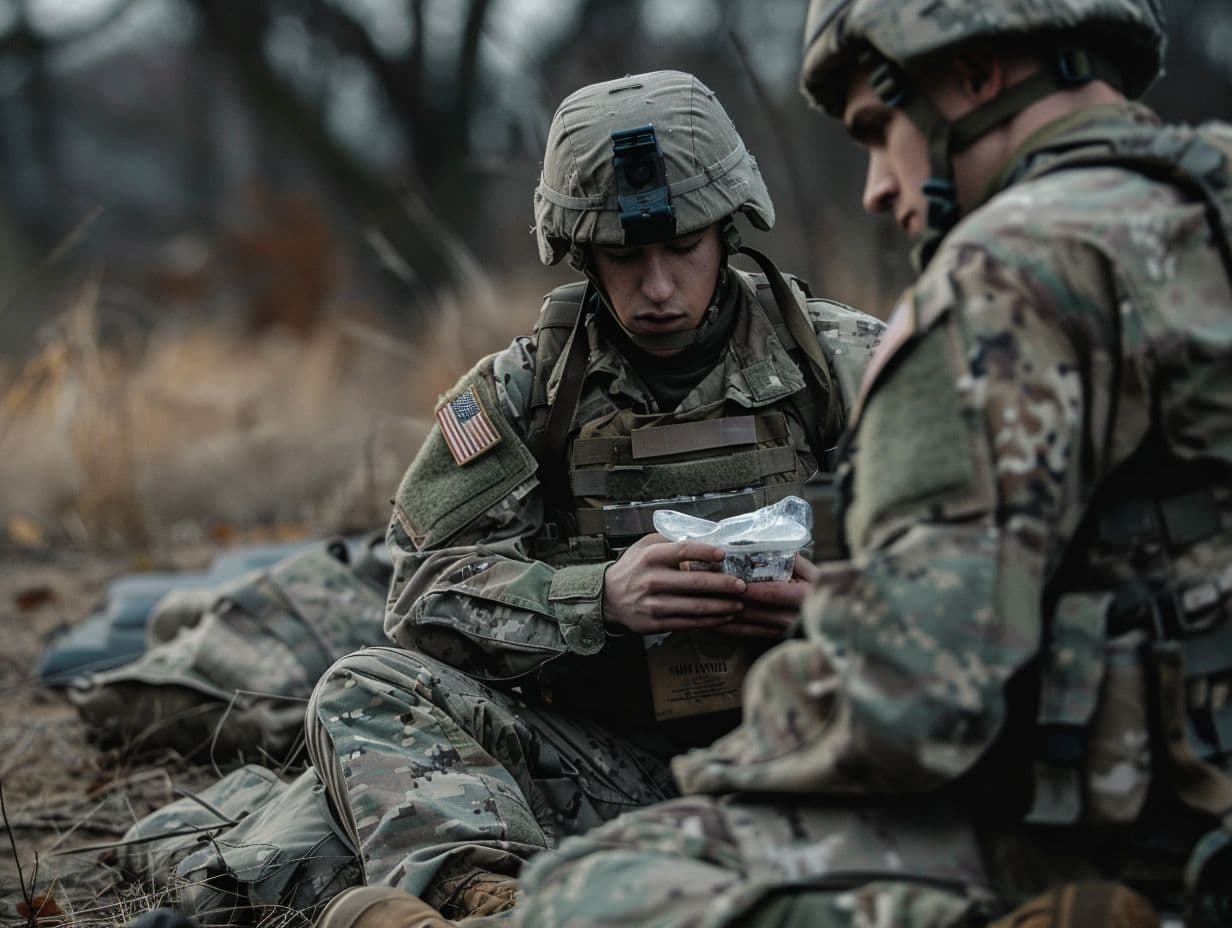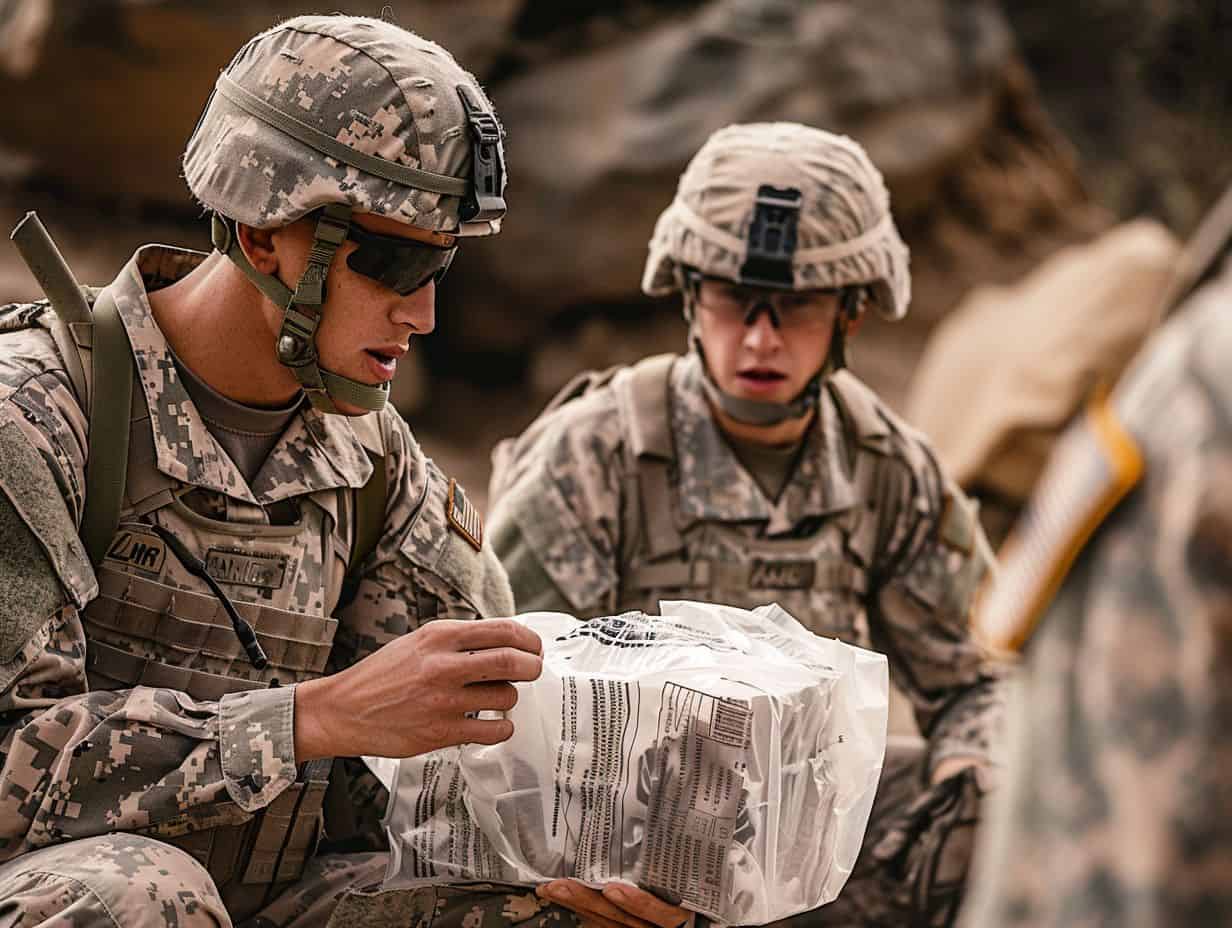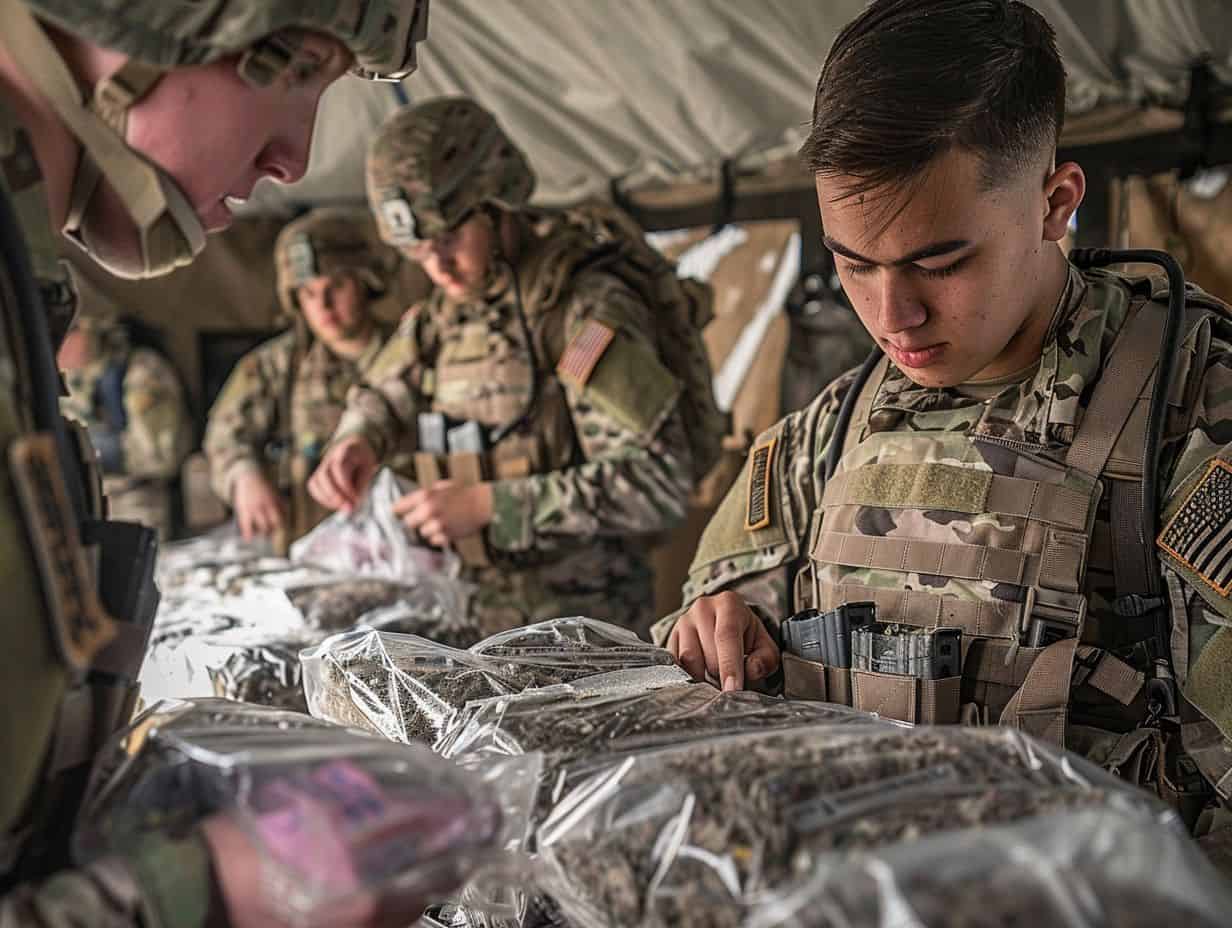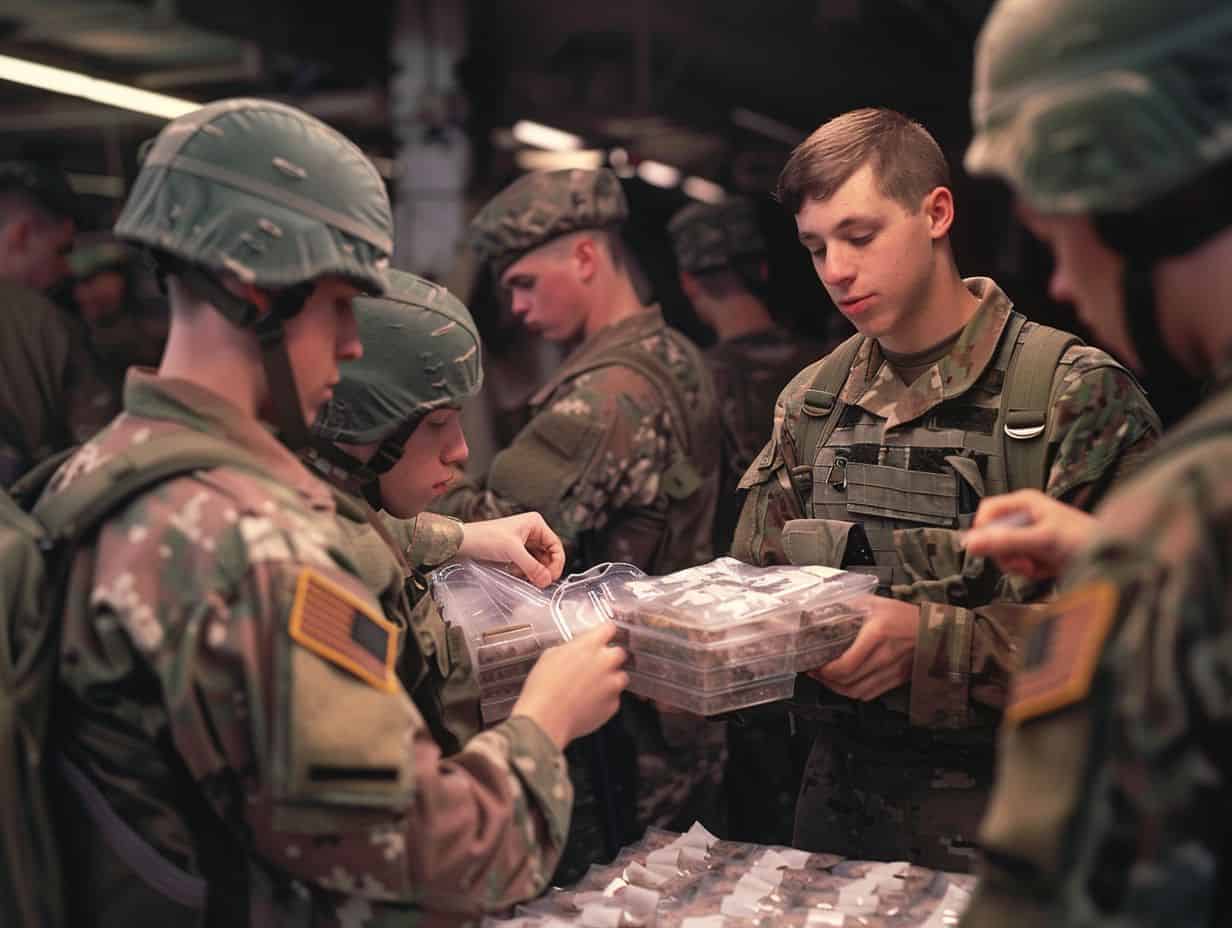User-Centered Design is a crucial approach that prioritizes the needs and preferences of users in product development.
In the case of MRE packaging for soldiers, this design philosophy is essential to ensure that the packaging meets the specific requirements of military personnel.
This article will examine the disparities between User-Centered Design and traditional design methods, the challenges associated with designing MRE packaging for soldiers, and the process of implementing User-Centered Design for MRE packaging development.
The benefits of this approach, such as enhanced functionality, increased soldier satisfaction, and cost savings, will be discussed.
A real-life example will be presented to illustrate how User-Centered Design has enhanced MRE packaging for soldiers. Join us as we explore the world of User-Centered Design in the realm of MRE packaging development.
What is User-Centered Design?
User-Centered Design is an iterative design process that prioritizes the needs and preferences of end-users throughout the development cycle. It focuses on creating products and solutions that are intuitive, user-friendly, and tailored to enhance the overall user experience.
This design approach involves continuous refinement based on user feedback and testing to ensure that the final product meets the specific requirements and expectations of the target audience. By actively involving users in the design process, companies can gain valuable insights that lead to innovative and user-centric solutions. User-Centered Design ultimately aims to optimize usability, accessibility, and satisfaction by incorporating human factors and behavioral patterns into the creative and technical aspects of product development.
How Does User-Centered Design Differ from Traditional Design?
User-Centered Design stands apart from traditional design approaches through its focus on user feedback, usability testing, and the integration of user preferences into the design process. While traditional design methods may prioritize aesthetics or technical requirements, User-Centered Design emphasizes meeting the functional needs and expectations of the end-user.
By engaging users throughout the design process, User-Centered Design ensures that products or services closely align with what customers genuinely require. This iterative approach allows for continual adjustments based on user insights, resulting in increased user satisfaction and enhanced functionality.
In contrast, traditional design often relies on assumptions about user behavior rather than concrete data, leading to products that may fall short in terms of usability and overall user experience. User feedback in User-Centered Design serves as a guide, directing designers toward creating solutions that are intuitive, effective, and ultimately more successful in the market.
Why is User-Centered Design Important for MRE Packaging Development?
User-Centered Design is important for MRE Packaging Development, particularly for military rations like Meals Ready-to-Eat (MREs), to ensure that the packaging solutions meet the specific needs and preferences of soldiers in the field. By incorporating soldier input, conducting thorough field testing, and optimizing packaging efficiency, user-centered design can result in packaging solutions that improve convenience, nutrition, and overall user satisfaction.
Soldiers play a crucial role in the success of MRE packaging development, as they offer valuable insights into what works best for them in challenging environments. When soldiers believe that their preferences are considered, it not only boosts morale but also enhances the practicality of the packaging.
In the field, packaging solutions must endure harsh conditions and be easy to carry, open, and dispose of. User-centered design ensures that these aspects are addressed, making the packaging more user-friendly and effective in real-world situations.
What Are the Challenges of Designing MRE Packaging for Soldiers?
Designing MRE Packaging for soldiers poses unique challenges due to diverse soldier preferences, specific packaging requirements in field conditions, and the need for packaging adaptations to ensure food quality and convenience. Understanding and addressing these challenges are crucial to create packaging solutions that cater to soldiers’ demands and enhance their meal experience.
Soldiers’ preferences vary widely, ranging from taste preferences to dietary restrictions, making it essential to design packaging that accommodates these differences. The harsh environmental conditions faced by soldiers in the field require packaging that is durable and can withstand rough handling. Packaging adaptations, such as easy-to-open pouches and compact sizes, play a significant role in ensuring that soldiers can access their meals quickly and efficiently.
Addressing these challenges not only improves the functionality of MRE Packaging but also enhances the overall morale and well-being of soldiers.
How Does User-Centered Design Address these Challenges?
User-Centered Design addresses the challenges of designing MRE Packaging for soldiers by integrating soldier input throughout the design process, conducting in-depth research to understand user needs, creating prototypes for testing, and developing packaging solutions that align with soldier preferences and requirements. By involving soldiers in the design and testing phases, user-centered design ensures that the final packaging solutions are tailored to meet the specific demands of military personnel.
This approach recognizes that soldiers are the end-users of the MRE packaging and therefore their feedback and experiences are invaluable in creating packaging solutions that are practical, efficient, and user-friendly in military scenarios. Through extensive user research, designers gain insights into the unique requirements and challenges faced by soldiers in the field, allowing them to develop packaging designs that address these needs effectively. Prototyping plays a crucial role in refining these designs by allowing for real-world testing and adjustments based on soldier feedback, ensuring that the final product is optimized for usability and convenience.
What is the Process of User-Centered Design for MRE Packaging Development?
The process of User-Centered Design for MRE Packaging Development consists of several key stages. These stages include:
- Research and data collection to comprehend user needs,
- Ideation and concept development to create innovative packaging ideas,
- Prototyping and testing to enhance solutions, and
- Implementation and evaluation to ensure the packaging effectively meets user requirements.
During the research phase, user behaviors, preferences, and challenges are analyzed in-depth through interviews, surveys, and observations. This data forms the basis for brainstorming sessions where a variety of ideas are generated to address identified user needs. These ideas are then transformed into physical prototypes using different materials and techniques to assess functionality and attractiveness.
Through iterative testing and feedback, prototypes are refined before progressing to the final implementation stage. This stage involves ramping up production and conducting user trials to evaluate real-world effectiveness.
1. Research and Data Collection

The initial stage of the User-Centered Design process for MRE Packaging Development involves extensive research and data collection to gain insights into soldier behavior, preferences, and specific user needs. By conducting in-depth user research, designers can gather valuable data to inform the subsequent stages of the design process.
This user research serves as a crucial foundation for creating MRE packaging that truly caters to the needs and behaviors of soldiers in various operational environments. Understanding the intricacies of how soldiers interact with their meals ready-to-eat can lead to designs that not only meet functional requirements but also enhance overall user experience. By looking into user preferences and behavioral patterns, designers are able to develop packaging solutions that are not only practical and efficient but also considerate of the unique demands soldiers face in the field.
2. Ideation and Concept Development
During the ideation and concept development phase of User-Centered Design for MRE Packaging, designers engage in brainstorming sessions to generate innovative ideas, create preliminary concepts, and incorporate feedback from soldiers to align the packaging design with user preferences. The application of packaging design principles ensures that the concepts are functional and user-centric.
Prototyping is a key component of this phase, allowing designers to test and refine their ideas before finalizing the design. Through the creation of prototypes, designers can collect input from soldiers and make necessary adjustments to ensure that the packaging not only meets functional requirements but also resonates with the end users. Adherence to design principles such as simplicity, usability, and accessibility further enhances the user experience and ensures that the final product is both practical and visually appealing.
3. Prototyping and Testing
In User-Centered Design for MRE Packaging Development, prototyping and testing play crucial roles. Designers develop physical or digital prototypes to gather user feedback and conduct thorough testing to assess packaging efficiency, usability, and user satisfaction. Feedback from soldiers is gathered to ensure that the prototypes effectively meet their requirements.
By integrating user feedback into the iterative design process, designers can make informed decisions to enhance packaging solutions. Analyzing user interactions with the prototypes helps in early identification of potential usability issues, resulting in refined packaging designs that address the specific needs of end-users. This iterative approach not only simplifies the development process but also enhances the likelihood of delivering packaging solutions that closely align with user expectations and preferences.
4. Implementation and Evaluation
The final stages of User-Centered Design for MRE Packaging Development involve implementing the refined solutions and evaluating their performance in real-world conditions. By gathering feedback from soldiers and incorporating improvements based on user input, designers ensure that the packaging solutions meet the desired standards of efficiency and user satisfaction.
During the feedback collection phase, various methods such as surveys, user interviews, and usability testing are utilized to gather data on user experiences and preferences. This valuable feedback guides designers in identifying areas for enhancement and modification.
The evaluation phase involves rigorous testing of the refined packaging solutions in realistic environments to assess their functionality and usability. Iterative processes are crucial at this stage as designers continue to refine the design based on user feedback, ultimately striving for a product that aligns closely with users’ needs and expectations.
What are the Benefits of User-Centered Design for MRE Packaging Development?
User-Centered Design offers several benefits for MRE Packaging Development, including improved functionality and usability, increased soldier satisfaction and acceptance, as well as fostering packaging innovation that aligns with user preferences and requirements.
By placing the user at the forefront of the design process, MRE packaging can be tailored to meet specific functional requirements, ensuring that the packaging is not only effective but also user-friendly. This results in packaging that is intuitive to use, easy to open in various conditions, and can effectively preserve the contents.
User-centered design leads to enhanced durability and portability, making the packaging more suitable for the demands of military operations while maintaining convenience for soldiers in the field.
1. Improved Functionality and Usability
One of the main advantages of User-Centered Design in MRE Packaging Development is the improvement of functionality and usability. By prioritizing user needs and preferences, designers develop packaging solutions that provide optimal performance, efficiency, and innovative features to meet the requirements of soldiers in the field.
This approach ensures that MRE packaging is not only practical but also customized to the specific needs of military personnel, enhancing their overall experience. User-Centered Design facilitates the development of intuitive packaging solutions that enhance efficiency by simplifying access to essential components while maintaining durability and portability. Through iterative testing and feedback collection, designers can refine packaging features and ergonomics, resulting in solutions that are user-friendly and highly functional in dynamic and challenging environments.
2. Increased Soldier Satisfaction and Acceptance

The application of User-Centered Design results in higher soldier satisfaction and acceptance of MRE Packaging solutions by aligning the design with soldier preferences and ensuring a positive user experience. The design impact of user-centered approaches resonates with soldiers, promoting acceptance and usability.
Soldiers exhibit increased engagement and connection with MRE Packaging solutions when their preferences are considered during the design phase. By analyzing soldier feedback and integrating their suggestions, designers can develop solutions that not only meet functional requirements but also address the emotional needs of the users. This personalized approach enhances user satisfaction and plays a significant role in establishing trust and loyalty towards the products. Soldier-centric designs improve the overall experience, making soldiers more willing to use the MRE Packaging solutions in various operational scenarios.
3. Cost Savings and Efficiency
User-Centered Design enhances the user experience and also contributes to cost savings and efficiency in MRE Packaging Development. By optimizing packaging materials, streamlining product development processes, and focusing on efficiency, user-centered approaches can lead to significant benefits in military logistics and resource management.
This approach ensures that the choice of packaging materials prioritizes durability and functionality, reducing the risk of damage during transport and storage. By conducting thorough product testing with end users in mind, developers can refine packaging designs to better protect MREs while also improving ease of use. Efficiency improvements in packaging design can result in reduced material waste and lower production costs, ultimately leading to a more sustainable and cost-effective solution for military MRE packaging development.
Real-Life Example: How User-Centered Design Improved MRE Packaging for Soldiers
An illustration of the effectiveness of User-Centered Design in MRE Packaging was seen in the incorporation of soldier feedback to enhance sustainability practices, improve packaging materials, and drive packaging innovation, resulting in more efficient and user-friendly solutions for military operations.
By involving soldiers in the design process, the packaging development team gained valuable insights into the practical challenges experienced in the field. Through iterative testing and prototyping, adjustments were made to ensure that the packaging not only met functional requirements but also aligned with sustainable practices. This iterative approach facilitated the integration of eco-friendly materials and designs that reduced waste and environmental impact. The outcome was a notable enhancement in the overall user experience, with soldiers reporting higher satisfaction levels and increased efficiency during deployment.
1. Research and Data Collection
The initial stage of the User-Centered Design process for MRE Packaging Development involves extensive research and data collection to gain insights into soldier behavior, preferences, and specific user needs.
Understanding the intricacies of soldier behavior and the unique needs of users in military settings is crucial for creating packaging that not only meets functional requirements but also enhances user experience and overall satisfaction. Through targeted surveys, observations, and interviews, researchers can delve deep into how soldiers interact with MRE packaging, what features are most important to them, and how packaging design can be optimized to facilitate ease of use and efficiency in challenging conditions. This user-centered approach ensures that the final product aligns closely with the demands and expectations of military personnel.
2. Ideation and Concept Development
During the ideation and concept development phase of User-Centered Design for MRE Packaging, designers brainstorm innovative ideas, create initial concepts, and incorporate soldier input to align the packaging design with user preferences. Applying packaging design principles ensures that the concepts are both functional and user-centric.
Prototyping plays a crucial role in this phase, allowing designers to bring the initial concepts to life for testing and refinement. By leveraging soldier feedback during prototyping, designers can iteratively improve the design to meet the specific needs and expectations of the end-users. Adherence to design principles like simplicity, clarity, and sustainability guides the development process, ensuring that the final packaging not only serves its practical purpose effectively but also resonates with the users on a visual and emotional level.
3. Prototyping and Testing
Prototyping and testing play crucial roles in User-Centered Design for MRE Packaging Development. During these stages, designers develop physical or digital prototypes to gather user feedback and conduct thorough testing to assess packaging efficiency, usability, and user satisfaction. The feedback collected from soldiers helps ensure that the prototypes effectively meet their needs.
This iterative process of prototyping and testing enables designers to enhance packaging solutions by refining them based on real-world user experiences. Through observation of soldiers interacting with the prototypes and analysis of their feedback, designers can make informed decisions to improve the design for usability, durability, and functionality.
Utilizing various testing methods such as A/B testing or usability testing provides valuable insights into how different aspects of the packaging design resonate with users. Ultimately, this user-centric approach results in the development of packaging solutions that not only meet but surpass user expectations, thus improving overall efficiency and user satisfaction.
4. Implementation and Evaluation

The final stages of User-Centered Design for MRE Packaging Development involve implementing the refined solutions and evaluating their performance in real-world conditions. By gathering feedback from soldiers and incorporating improvements based on user input, designers ensure that the packaging solutions meet the desired standards of efficiency and user satisfaction.
During the feedback collection phase, designers utilize various methods such as surveys, interviews, and usability testing to gain insights into user experiences and preferences. This data is then analyzed to identify areas where the packaging design can be enhanced. Performance evaluation plays a crucial role in determining how well the redesigned packaging functions in practical scenarios. By closely monitoring user interactions and observing their behaviors, designers can pinpoint strengths and weaknesses in the design.
The iterative process of incorporating user improvements ensures that the packaging evolves to address specific user needs and concerns.
Frequently Asked Questions
What is user-centered design and how does it relate to MRE packaging development for soldiers?
User-centered design is an approach to product development that involves involving the end users in the design process. In the case of MRE packaging for soldiers, this means actively seeking input and feedback from soldiers to create packaging that meets their needs and preferences.
Why is it important to involve soldiers in the development of MRE packaging?
Soldiers are the primary users of MREs and their feedback is crucial in ensuring that the packaging meets their needs and improves their overall experience. By involving soldiers in the design process, the packaging can be tailored to their specific needs and preferences, resulting in a more user-friendly and effective product.
How are soldiers involved in the user-centered design process for MRE packaging?
Soldiers can be involved in various ways, such as providing feedback on current packaging, participating in focus groups or surveys, and testing prototypes. Their input and feedback are then used to inform the design and development of the packaging.
What are some common issues that soldiers have with MRE packaging?
Some common complaints about MRE packaging include its weight, bulkiness, and difficulty in opening. Soldiers also often express a desire for more variety and customization in the contents and packaging of MREs.
How does user-centered design benefit both soldiers and the military as a whole?
By involving soldiers in the design process, the packaging is more likely to meet their needs and preferences, leading to improved satisfaction and usability. This, in turn, can have a positive impact on morale and performance. Additionally, the military can save time and resources by avoiding costly redesigns and addressing potential issues early on.
What are some examples of changes made to MRE packaging based on soldier feedback?
Some changes that have been made based on soldier feedback include reducing the weight and size of the packaging, adding tear notches for easier opening, and increasing the variety of menu options. Additionally, soldier input has influenced the development of specialized MREs for different situations and environments.


